Separating the good from the bad in bacteria
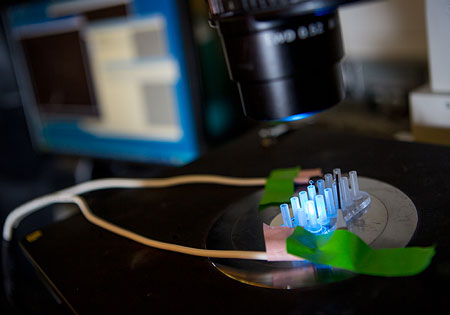 New microfluidic technique quickly distinguishes bacteria within the same strain; could improve monitoring of cystic fibrosis and other diseases.
New microfluidic technique quickly distinguishes bacteria within the same strain; could improve monitoring of cystic fibrosis and other diseases.
Oct 17th, 2013
Read more
 Subscribe to our Biotechnology News feed
Subscribe to our Biotechnology News feed
 New microfluidic technique quickly distinguishes bacteria within the same strain; could improve monitoring of cystic fibrosis and other diseases.
New microfluidic technique quickly distinguishes bacteria within the same strain; could improve monitoring of cystic fibrosis and other diseases.
Oct 17th, 2013
Read moreScientific links between the UK and China in the exciting field of synthetic biology will be boosted by the announcement of five grants awarded through a Synthetic Biology China Partnering Award.
Oct 16th, 2013
Read more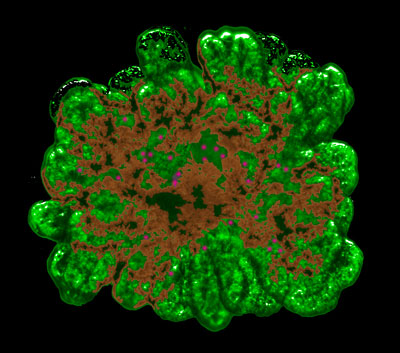 An international team of researchers from the University of Copenhagen have successfully developed an innovative 3D method to grow miniature pancreas from progenitor cells. The future goal is to use this model to help in the fight against diabetes.
An international team of researchers from the University of Copenhagen have successfully developed an innovative 3D method to grow miniature pancreas from progenitor cells. The future goal is to use this model to help in the fight against diabetes.
Oct 15th, 2013
Read moreResearchers at the University of Illinois at Chicago have identified a protein expressed by human bone marrow stem cells that guides and stimulates the formation of blood vessels.
Oct 14th, 2013
Read moreCells, biological circuits, and individual biomolecules organize themselves and interact with the environment. Use of these capabilities in flexible and economically efficient biotechnological production systems is in the focus of the 'Molecular Interaction Engineering' project. It is the objective to develop printed biological circuits and catalysts for biologico-technical hybrid systems.
Oct 14th, 2013
Read moreIn her PhD thesis Ruth Sanz-Barrio, an agricultural engineer, has demonstrated, for the first time, the viability of using specific tobacco proteins (known as thioredoxins) as biotechnological tools in plants. Specifically, she has managed to increase the amount of starch produced in the tobacco leaves by 700% and fermentable sugars by 500%.
Oct 14th, 2013
Read more Researchers at Johns Hopkins have succeeded in making flattened, football-shaped artificial particles that impersonate immune cells. These football-shaped particles seem to be better than the typical basketball-shaped particles at teaching immune cells to recognize and destroy cancer cells in mice.
Researchers at Johns Hopkins have succeeded in making flattened, football-shaped artificial particles that impersonate immune cells. These football-shaped particles seem to be better than the typical basketball-shaped particles at teaching immune cells to recognize and destroy cancer cells in mice.
Oct 14th, 2013
Read moreThe EU-funded project BIONET ('Network topology complements genome as a source of biological information') is using graph theory to model biological network interactions and develop advanced algorithms to analyse these complex data.
Oct 11th, 2013
Read more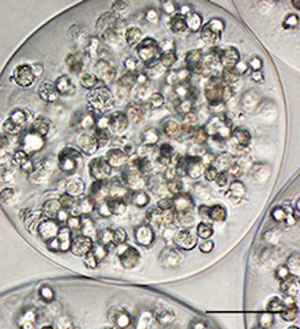 In many studies of stem cell therapy for heart disease, most of the cells wash away in the first hour. Researchers at Emory and Georgia Tech encapsulate mesenchymal stem cells in alginate so that the cells stay alive and in the heart. In rats, the capsules promote healing after a heart attack. Alginate has several biomedical uses already so the path to translation looks good.
In many studies of stem cell therapy for heart disease, most of the cells wash away in the first hour. Researchers at Emory and Georgia Tech encapsulate mesenchymal stem cells in alginate so that the cells stay alive and in the heart. In rats, the capsules promote healing after a heart attack. Alginate has several biomedical uses already so the path to translation looks good.
Oct 11th, 2013
Read moreResearchers develop a first-of-its-kind mathematical model for the biological process that keeps your immune system working.
Oct 7th, 2013
Read moreNew research has led to a better understanding of the molecular mechanisms that make certain blood-producing cells function normally. The research will help prevent diseases that lead to heart attacks and strokes.
Oct 7th, 2013
Read more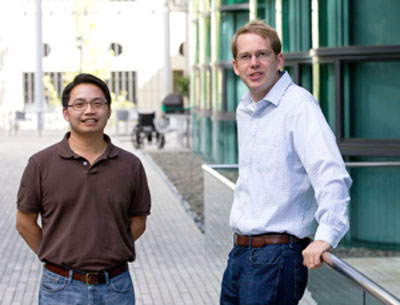 A new technique developed by researchers at the Stanford University School of Medicine could pave the way to an era of personalized epigenomics.
A new technique developed by researchers at the Stanford University School of Medicine could pave the way to an era of personalized epigenomics.
Oct 7th, 2013
Read more Uzbek microbiologist Dilfuza Egamberdieva hopes to apply her new agricultural technique soon in Uzbekistan to boost the yield of economically important crops such as wheat, cotton, tomato and cucumber.
Uzbek microbiologist Dilfuza Egamberdieva hopes to apply her new agricultural technique soon in Uzbekistan to boost the yield of economically important crops such as wheat, cotton, tomato and cucumber.
Oct 7th, 2013
Read moreSingapore and Oxford scientists unlock secret to cancer cell growth, paving the way for better fight against cancer.
Oct 7th, 2013
Read moreBiologists of the University of Zurich have developed a method to visualize the activity of genes in single cells. The method is so efficient that, for the first time, a thousand genes can be studied in parallel in ten thousand single human cells.
Oct 6th, 2013
Read more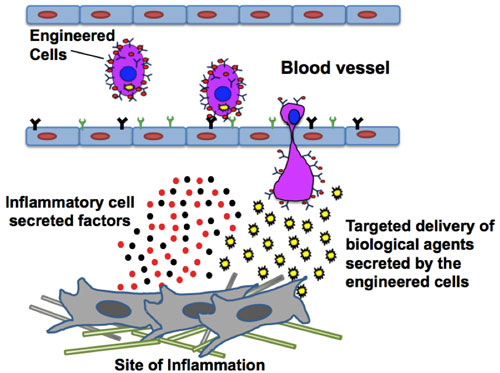 A group of researchers have found a way to use stem cells as drug delivery vehicles. The researchers inserted modified strands of messenger RNA into connective tissue stem cells - called mesenchymal stem cells - which stimulated the cells to produce adhesive surface proteins and secrete interleukin-10, an anti-inflammatory molecule.
A group of researchers have found a way to use stem cells as drug delivery vehicles. The researchers inserted modified strands of messenger RNA into connective tissue stem cells - called mesenchymal stem cells - which stimulated the cells to produce adhesive surface proteins and secrete interleukin-10, an anti-inflammatory molecule.
Oct 4th, 2013
Read moreA new tool enables biomechanical studies of individual cells: Red blood cells were laser-propelled over long distances through optofluidic photonic crystal fibers and their deformation due to shear forces monitored.
Oct 2nd, 2013
Read moreScientists at The Scripps Research Institute (TSRI) report a highly programmable and controlled platform for preparing and experimentally probing synthetic cellular structures.
Oct 1st, 2013
Read more